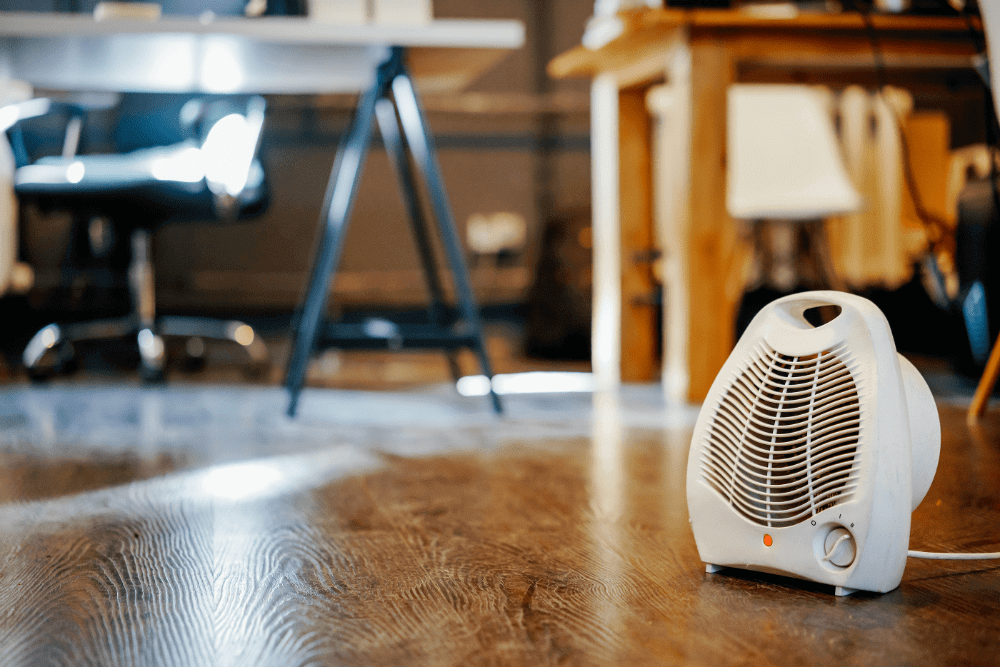The 10-Minute Rule for 1 Source Portable Air
The 10-Minute Rule for 1 Source Portable Air
Blog Article
The Buzz on 1 Source Portable Air
Table of ContentsGetting The 1 Source Portable Air To WorkLittle Known Questions About 1 Source Portable Air.Not known Details About 1 Source Portable Air Get This Report about 1 Source Portable Air1 Source Portable Air Things To Know Before You Get This
Running costs are based upon a power rate of 40c/kWh. The expenses for 3 months' use in winter are based upon 500 hours use, or approximately 6 hours daily for three months. Optimum warm output is based upon the optimum power level of the versions we have actually evaluated (we concentrate on higher electrical power heating systems).
On standard, small follower heating systems are less expensive to acquire, however can have greater running costs. Oil column heating units will be the least expensive on the market to run (on average) but only by a slim margin in advance of convection heating systems (like panel and micathermic panels).
The smart Trick of 1 Source Portable Air That Nobody is Discussing
If you have a relatively easy to fix ceiling fan, it'll assist distribute the heat around the room much more evenly. A number of pricey heating systems have failed to impress our testers, while some cheaper versions make for remarkably great buys.
As the name recommends, they radiate warm from a red-hot heating aspect (so the household will have to take turns sitting in front of it). Glowing heating units are reasonably cost-effective.
Glowing heaters usually set you back between $20 and $200. Oil-filled column heating systems don't in fact shed oil they make use of power to heat the oil that's secured inside their columns or 'fins'.
The Basic Principles Of 1 Source Portable Air
Some column heating units aren't even oil-filled yet instead make use of other material or home heating innovation to work similarly - 1 Source Portable Air. The risk of fire with an oil column heating unit is reduced compared to other heater kinds, yet never no. Oil heating systems do not have actually revealed aspects like radiant heaters do, and their surface temperature level is reduced than several other heater kinds (their big surface location makes up for it)
Oil column heating systems won't take off, and while they don't burn their oil to generate warmth, it's still flammable, so there is a fire threat if the oil leakages, if the heating system topple and leaks, or if flammable items or material enter contact or fall on the heater. You must work out the exact same degree of caution with oil heaters as for other Learn More heating system types, and never hang towels or garments over one to dry them utilize a drying out shelf instead, at the very least one metre away.
Column heating units are particularly useful in spaces where they'll be turned on for lengthy periods of time or where they'll operate unattended, such as over night in a room. The surfaces you're most likely to touch on a column heating system do not get as warm as various other sorts of electrical heating systems. You can make use of a ceiling follower on very reduced rate to aid the column heating system to disperse the heat quicker and much more uniformly.
Oil-filled column heating units normally set you back between $50 and $450. Convection and panel heating units attract cold air over an electrical heating component.
The 9-Second Trick For 1 Source Portable Air

Convection and panel heaters are extra portable than their oil-filled column heating unit counterparts since they're substantially lighter. They'll heat up the air in an area uniformly and quickly. Like a column heating system, you can utilize a ceiling fan on really low rate to distribute the heat faster and extra uniformly. Some versions, especially panel heaters, are fairly costly to purchase.

The Ultimate Guide To 1 Source Portable Air
Follower heating systems are commonly smaller sized and extra portable than various other electrical heating systems. They also are available in the kind of tower fan heaters, which can be better for dispersing warm around bigger areas because of their taller profile. They can warm the air in an area much more rapidly, uniformly and promptly than a few other heating unit types.
They can be fairly loud with the fan on full power, however are usually reasonably quiet at reduced fan rates. Fan heaters (ceramic or otherwise) usually expense between $60 and $900. Ceramic follower heating units aren't always any type of various in price to non-ceramic models. A fairly current entrant right into the consumer market, infrared heaters warm the room like the sun heats your face (without the UV rays so no threat of skin cancer). 1 Source Portable Air.
Report this page